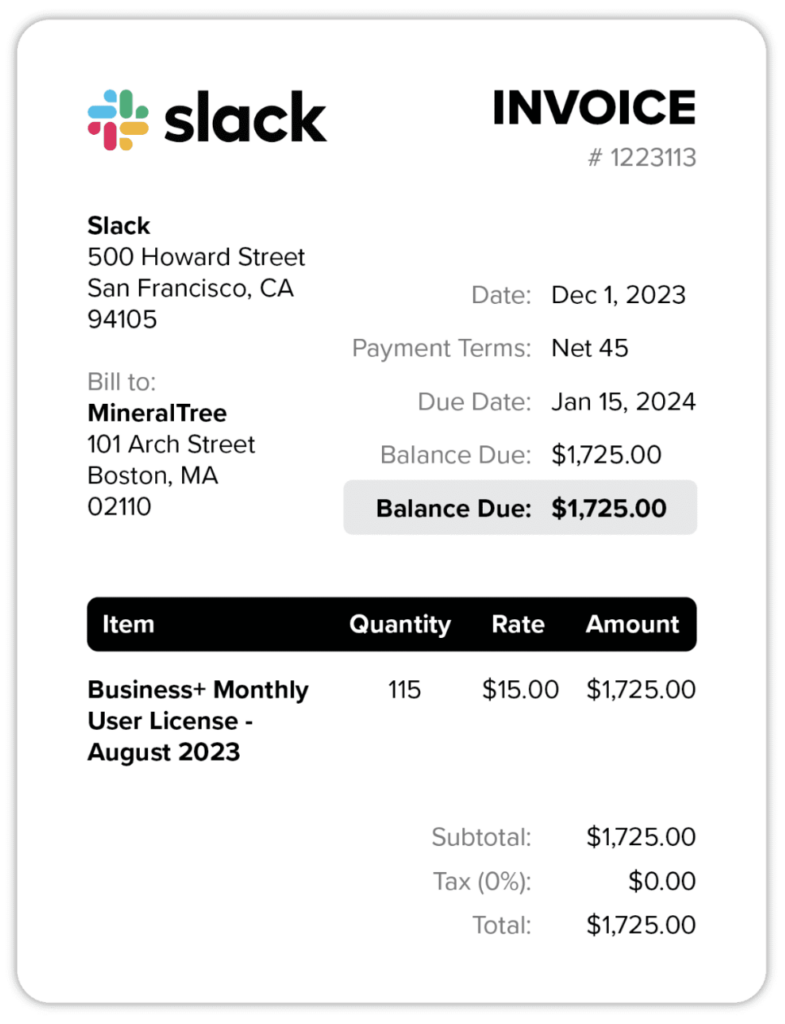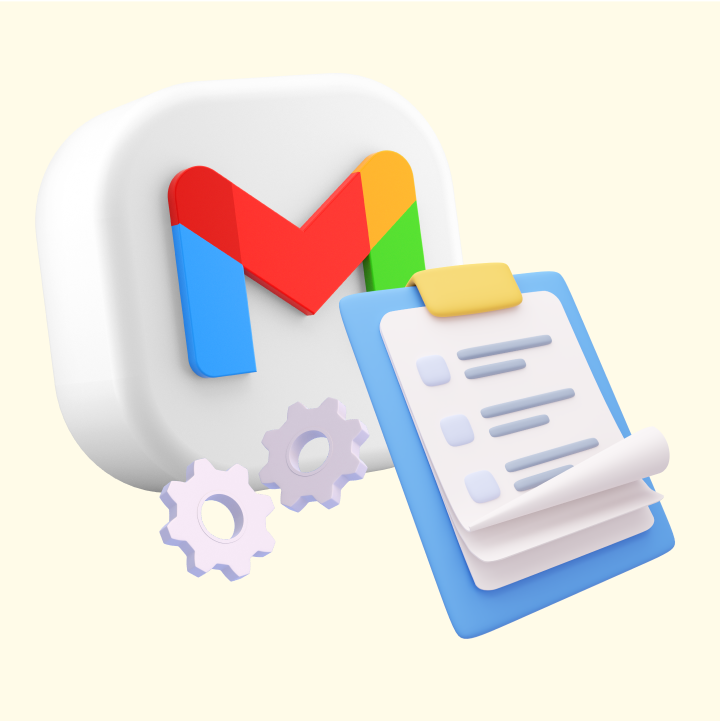Whether you’re a freelancer, a small business, or an enterprise, sending clear, professional invoices is important to ensuring a steady cash flow. It’s how you notify clients and customers on how much they owe you, payment terms, and deadlines.
If you’re unsure how to craft invoices, you’re at the right place.
In this blog, we discuss some best practices you should follow when sending an invoice email to your customers.
As a bonus, we’ve also included some invoice email templates so that you don’t need to spend time and effort creating one from scratch.
But before that, let’s take a look at the basics.
Table of Contents
- What is An Invoice Email?
- How to Ensure Your Invoices Are Paid On Time
- How to Write Invoice Emails for Different Use Cases
- Get Started
What is An Invoice Email?
An invoice email is used to request payment for goods or services a customer has purchased from your business. The email involves an attached invoice which mentions all the details about the purchase including items purchased, unit cost, and the total price. The invoice will also include a date within which the payment must be completed.
In some cases, the invoice email will also include steps to make the payment and mention the accepted methods to avoid any confusion.

You Might Also Like: How to set up a help desk to manage invoices
How to Ensure Your Invoices Are Paid On Time
Prompting your customers to pay their dues on schedule can be a tricky job. You need to include all the right information and follow-up the right amount without seeming overly pushy.
Here’s how to do this.
1. Create a well-structured invoice email
Invoice emails are payment reminders and you need to make them as detailed as possible so customers don’t have any confusion regarding their dues.
Here are some tips to write a well-structured invoice email:
- Use a straightforward subject line that quickly summarizes the content of your email. For example: Invoice #[Invoice Number] for [Purchase Name] is Due
- Add your business details — name, VAT number, contact details, address, and logo
- State the purpose of the email in the opening line. Be direct but courteous.
- Add details on how and when the payment should be made. Specify the final date to make the payment and don’t forget to mention details about penalties for late dues (if applicable).
- Attach the invoice in the email and cross-check to make sure the attachment opens correctly.
- Offer a support option for customers who need further assistance.
2. Send invoice emails at the right time
The purpose of invoice emails is to solicit your payment as soon as possible. Some finance teams send invoices before the product or service is even purchased. Others allow customers to purchase goods on credit and send invoices later.
Either way, time your invoices so they don’t end up getting overlooked.
Here are some tips to follow when scheduling your invoice emails:
- Send invoices during weekdays from Monday to Thursday so that the customer gets a full business day to process them. Most businesses do not process payments on Fridays since it is closer to the weekend.
- Try to send your invoice emails in the morning. That way it will be the first thing the customer will see when they open their inbox.
- If you are on a retainer agreement (customer avails services for a specific period), then send invoices at regular intervals (weekly, monthly, or yearly).
- If you’re working with a corporate client, the best time to send your invoice is a week before the month ends since that’s when most companies close their payments for the month.
3. Offer prompt support
Have a system in place to respond to billing queries (queries on accuracy of charges, payment terms, invoice details, payment methods) as soon as possible. Any delay in this might result in delayed payments since the customer will be forced to wait for clarification before settling the invoice.
Hiver, for instance, allows you to automatically route emails to team members using certain triggers. Say, all emails with the term ‘payment’, ‘invoice’, or ‘ bills’ in the subject line or email body will be sent to Rob from your finance team.
This way they can swiftly respond to customer queries about invoice terms, ensuring timely payments.

How to Write Invoice Emails for Different Use Cases
We’ve saved you the grunt work of creating invoice emails from scratch by consolidating five email templates for different situations.
1. Standard invoice emails
These emails are sent to a customer as soon as they receive your product or service. It is a pretty straightforward email that includes a friendly greeting, a professional signature, and the invoice attachment itself.
Subject: Invoice for [Product/Service Name]
Hey [Customer Name]
We hope you’re doing well.
Please find attached the invoice for the purchase of [Product/Service Name] on [Purchase Date].
You can make the payment either through our payment gateway [URL Link] or send us a cheque at [Address of Business].
Once you make the payment, please send us a screenshot of the transaction ID or a photo of the cheque for our records.
If you have any questions, please feel free to reach out to us at [Contact Details].
It’s been an absolute pleasure doing business with you.
Best
[Your Name]
[Your Position]
[Your Company]
2. Past due invoice emails
These are emails you send to customers who have not settled an invoice even after the due date.
It is a courteous reminder for customers to prompt them to make the payment soon. Past due invoice emails are important to close off your balance payments and maintain financial records.
Subject: Your Invoice #[Invoice Number] is Past Due
Hey [Customer Name]
We hope that this email finds you well.
This is a gentle reminder that your invoice #[Invoice Number] dated [Date] is past due.
We request that you make the payment towards this invoice as early as possible so that we can close this off in our financial records. You can use our payment gateway [URL Link] to initiate the settlement.
Please let us know if there’s anything we can do to assist you.
Thank you for your cooperation.
Best
[Your Name]
[Your Position]
[Your Company Name]
3. Early payment discount emails
If you’re looking for an easy tip to improve cash flow, we suggest you offer a small incentive to customers for early payments. It is a great way to encourage customers to pay off their bills before the due date and foster good relationships.
Subject: Early Payment Discount Available for Invoice #[Invoice Number]
Hey [Customer Name]
We’re excited to let you know that we’ve introduced Early Payment Discounts for customers who choose to pay off their invoices before the due date [Due Date].
You can avail as much as 10% off on your next purchase!
To go ahead with making the payment, visit our payment gateway [URL Link] and then send us a screenshot of your receipt to avail your discount.
If you have questions, reach out to us at [Support Contact]. We’re here to help!
Best
[Your Name]
[Your Position]
[Your Company]
4. Recurring service invoice
If you’re subscribed to recurring services like a subscription based software, OTT platforms, or online education programs, you will likely receive a recurring invoice every month or year (whichever is applicable).
This email can be sent to customers who have a recurring service agreement with you. It includes the details of the service, amount due, and a payment link. Sending a recurring service invoice can also help reinforce the value of your service.
Subject: Invoice Due for the Month of [Month]
Hey [Customer Name]
We’d like to remind you that your payment for [Product/Service Name] for the month of [Month Name] is due by [Date].
To continue using our services, please complete the payment latest by [Last Due Date].
[URL Link for Payment]
We’re here to help if you need it. Please visit our help center [Link to Knowledge Base] for more information or contact us at [Contact Information].
Best
[Your Name]
[Your Position]
[Your Company]
5. Proforma invoice
A proforma invoice is sent to request advance payment(s) from customers in anticipation of a product or service. These invoices are used by manufacturing companies for the purchase of raw materials, wholesalers for bulk orders of electronics or household items, and hospitals for purchasing medical equipment.
These invoices provide estimates of a purchase and also double up as pre-sales documents
Subject: Proforma Invoice for [Company Name] for [Product/Service Name]
Hey [Customer Name]
As requested, please find attached the proforma invoice for [Service/Product]. The estimated total amount is [Amount]. This invoice is provided for your reference and is not a request for payment.
If you have any questions or need to make any changes, please let us know.
Best
[Your Name]
[Your Position]
[Your Company]
Get Started
Irrespective of the scenario, the key to a good invoice template is to keep it brief and actionable. It should also be sent at the right time so that it gets enough visibility.
The best practices and templates we’ve mentioned above are a great place to start for creating and sending invoices. They can help you keep track of your invoices and remind customers to make timely payments.
 Skip to content
Skip to content













